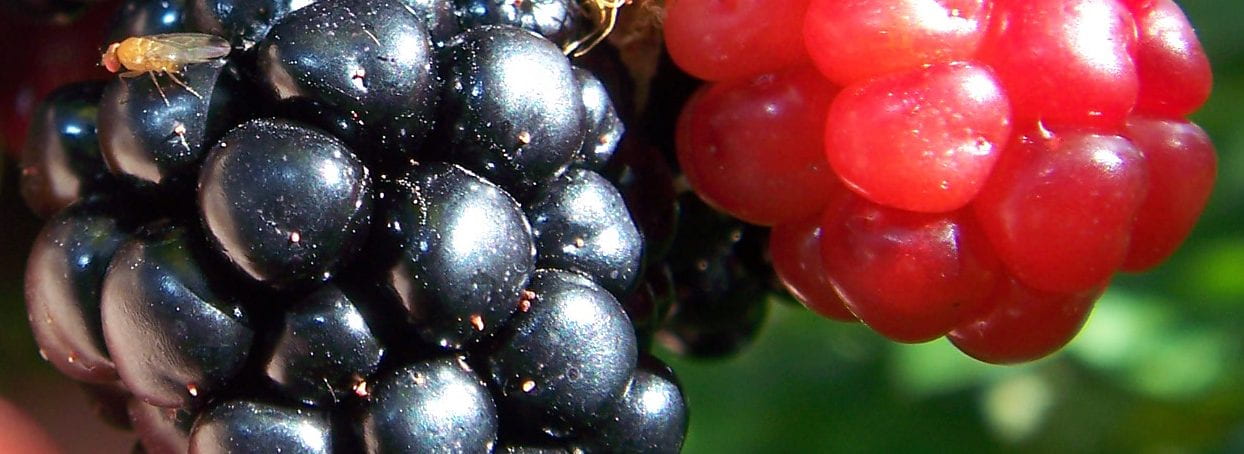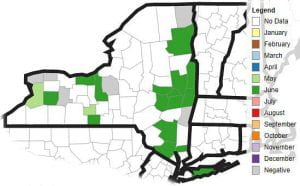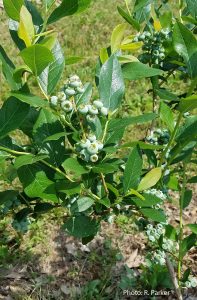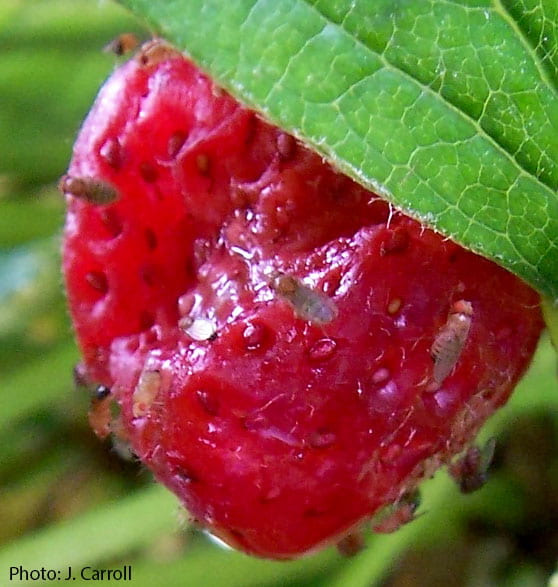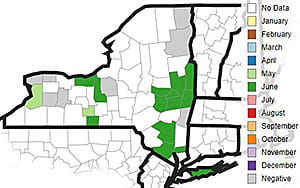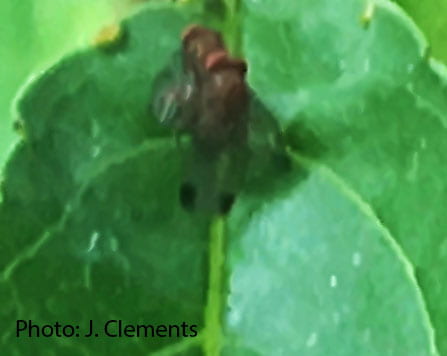Three female SWD were caught in traps set on the edge of and within a blueberry planting in Clinton County. These traps, checked on July 2, 2019, are being monitored by Andy Galimberti, Cornell Cooperative Extension Eastern NY Commercial Horticulture Program.

About 85% of the counties in the CCE SWD Monitoring Network have caught SWD in traps. Two more counties have been added to the network in recent weeks – Herkimer and Tioga.
Numbers caught in traps, especially in Eastern NY are starting to climb, with totals in the double and triple digits. Fruit is ripe and will continue ripening over the next several weeks and be at risk of infestation.
Consult Cornell Fruit Resources SWD Management, fruit.cornell.edu/spottedwing/management/.
Plan your insecticide program.
- SWD population growth models theoretically calculate that using the most efficacious insecticide first will more efficiently lower SWD numbers by knocking the population back to close to zero and delaying population growth.
- Review the Quick Guide to SWD Insecticides online at:
www.hort.cornell.edu/fruit/pdfs/swd/berry-insecticides.pdf for berries
www.hort.cornell.edu/fruit/pdfs/swd/treefruit-grape-insecticides.pdf for stone fruit and grapes
- Rotate use among insecticides with different IRAC groups to reduce selection pressure for resistant populations of SWD.

